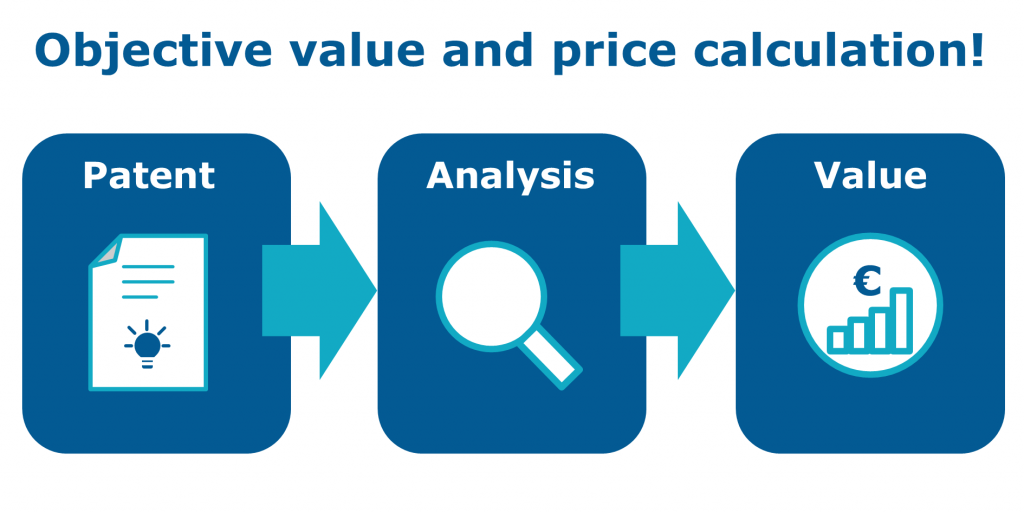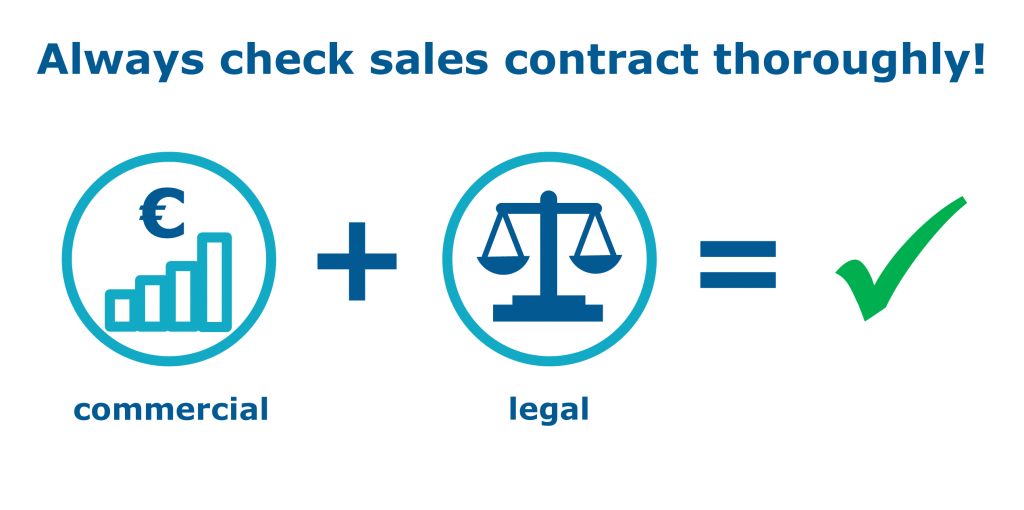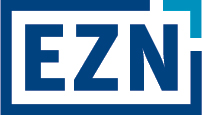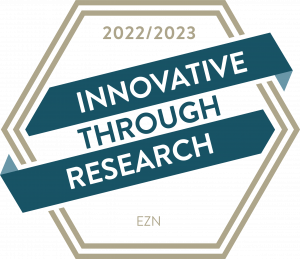Patent Marketing: How to sell your invention and patent application

Introduction: To sell your invention
Are you considering selling your invention or your patent? A sale gives you the opportunity to turn your creation into money in just one step. However, before signing a sales contract extensive preparatory work is required. Apart from target-oriented marketing of your technology, finding potential buyers, and agreeing on a fair sales price it is of utmost importance that the final contractual arrangement is clearly defined both in commercial and legal terms. Any errors in this department could have severe consequences. Worst case: you lose it all. In this article you are going to learn what aspects you need to pay special attention to when considering a sale in order to turn your invention into profit. These insights are based on our many years of experience in the field of invention and patent marketing. We are going to talk about:
- Key factors to successfully market your invention and sell your patent;
- Sales contract for a patented invention;
- Typical pitfalls selling a patent application;
- Bottom line: The patent sale must be systematically thought through;
- Checklist invention sale.
Key factors to successfully market your invention and sell your patent
First, let us take a look at the preconditions that should exist before selling an invention. Trying to sell an innovative technology just as an idea or concept will not get you very far. On one hand, the risk of your invention being copied while marketing and presenting your ideas to potential buyers is simply too high. On the other hand, if you do not want to present your invention for security reasons your chances of getting into any sales negotiations will be pretty low. Who would be willing to meet an inventor/vendor who refuses to share their ideas? Non-disclosure agreements (NDA) offer some protection but could at the same time prove to be a pitfall. What to do if a company does not accept the NDA or even copies some of the invention’s features despite assured confidentiality? This is where industrial property rights come into play. They protect the intellectual property (IP). Patents and utility models can be used to prohibit the use of protected technology by third parties – if necessary, by a court ruling. So, in case a company unlawfully uses an invention patents can be an effective defense mechanism. This effect – the legal protection of the invention’s unique characteristics – will be acknowledged in the act of selling the invention. Granted patents that present the exact international reach matching the potential buyers’ business case work particularly well.

If you wish to sell a patented invention you should analyse the legal protection of both your own patent application as well as the potential buyer’s property rights and their patent strategy. What similar patents do exist? Do they potentially complement or block your patent? What kind of competitive advantages might the purchase of the offered property rights generate for the patent buyer?
A well-advanced stage of your technology’s development would also benefit the sale. At best, you can already present a prototype. Whether you ideally reach a high technical maturity level depends, primarily, on the financial resources that are available to you or your own production possibilities. In case of more complex and costly developments private inventors depend even more on property rights and selling skills if the technical implementation would break their budget. If you wish to sell your invention or patent application to a company you need to consider that the market launch still might require some licencing and the like.
Naturally, you need to explain very clearly to the potential buyer what technical advantages your technology and patent applications bring to the table. Most inventors are aware of that. Nevertheless, it is a blessing and a curse. Many inventors focus on the technology. They often get too much into detail presenting the technical features. The result is that the potential buyer might have a hard time focussing on the essential advantages. If the advantages are not presented in a clear and concise manner it can lead to confusion – which tends to have a negative impact on the selling process.
One of the most important aspects of a patent sale is a clear description of the invention’s economic advantages. Consider the following questions in particular:
- What potential does it have in terms of revenue and profits?
- What and how much does the buyer save implementing the invention?
- How are the potential buyer’s competitors set up?
These questions regarding the pure invention lead directly to the more important economic revenue situation: What else is needed before market launch and what costs are to be expected? What is the global trend in the respective technology sector? To be able to answer these questions usually requires an expansive market and profitability analysis, which private inventors focussing purely on the technology often miss.
The patent sale is, as the name suggests, a business transaction. And in business the price always plays a crucial role. In the end, it depends mostly on the price that is asked whether a company buys a patent or property rights portfolio. Here, the sales price does not necessarily identify with the patent’s theoretical value which can often be confusing. Most of the time, the actual sales price represents the negotiations results based on the value potential. The patent valuation is a complex process. The results of different valuation methods may not always be comparable. Common assessment methods are:
- Revenue approach: The patent value results from expected revenues in the future (license value analogy)
- Market approach: The property right’s value results from similar market prices (market value analogy)
- Cost approach: Assessment is based on current costs of property rights
The focus should always lie on an objective value and price calculation. Subjective evaluations, driven by euphoria, that are not realistic will not impress your counterpart (Ex.: “You are going to earn millions with my invention which justifies a sales price of minimum 2 million Euros.”). Computer-generated value and sales price calculations should be treated with caution as well because those assessment methods are often not transparent and might not be accepted by negotiation partners.

Purchase agreement for a patented invention
If invention owner or seller and buyer of the property rights (patent applications, utility models, design, brand) have come to an agreement and have determined the sales price all arrangements need to be precisely specified in a written purchase contract. Verbal agreements are not recommended. The written contract should contain the following information in particular:
- Name and address of patent holder or seller;
- Name and address of buyer;
- Detailed information about property rights mentioning title and registration number;
- Time and date from which the transfer of rights applies;
- Amount of sales price and when payment(s) is(are) due.
Obviously, the items mentioned above represent just a fundamental extract. There are many more arrangements that you need to pay attention to – notably the commercial and legal aspects. Hence, it is highly recommended to consult relevant experts to avoid any kind of errors in the final stages. You need to be extra careful with pre-made templates for sales contracts. They should never be used without having them checked thoroughly beforehand. Free online contract templates can be risky because they might not be suitable for the specific case or their contents might not be up-to-date. The sales contract must be clearly defined both in commercial and legal terms.

Typical pitfalls selling a patent application
Below you will find some of the most common pitfalls that you should avoid during your patent sale in order to prevent unpleasant surprises while negotiating or after signing the contract:
- The patent or property rights family has been sold even though they are still needed for the own business;
- Trying to sell a service invention to your employer which they already own under the Law of Employee’s Inventions (e.g. in Germany: ArbnErfG);
- The invention was published prior to the patent application so the patent office cannot grant a patent due to the lack of innovation which makes the invention worthless.
If you consider consulting an exploitation agency to support your patent marketing please keep in mind: If you grant rights, let’s say to a patent broker, this might be accompanied by the loss of the sole rights to the invention, e. g. marketing models with third party involvement.
Please remember: There is no guarantee that a company actually wants to buy your patented invention. This could have many reasons. One reason might be that companies prefer a different user agreement. The article linked below describes patent sales as well as further patent marketing options:
Recommended reading: The four options that are best for marketing of inventions and patents – including suggestions and insights from practical experience
Bottom line: The patent sale must be systematically thought through
In conclusion, the sale of your invention is generally a promising opportunity to turn your idea into profit. In this regard, property rights are almost indispensable. If you have your technology effectively protected by patents, clearly present the advantages, and determine a fair sales price you are very well prepared for a sale. Below you will find a checklist containing the most important criteria for a successful patent exploitation in the form of a sale.
Checklist invention sale
This checklist is based on our vast hands-on experience in patent marketing and selling property rights since 1981:
- The invention proves itself through technical and economic advantages;
- The technology’s implementation presents a clear benefit to the potential buyer;
- The invention is effectively protected by an appropriate property rights portfolio;
- The sales price has been objectively determined using an established method;
- The patent marketing and contract negotiations were conducted professionally;
- The arrangements in the patent purchase contract are tailored to the specific case and have been economically and legally examined.
We support you in all things marketing
Do you need help marketing your invention or patent? We are happy to support you with our professional patent marketing. Please get in touch; we are looking forward to hearing from you!

Disclaimer
All contents in this article have been carefully compiled and examined. However, no guarantee as to the correctness, completeness and up-to-dateness can be given. This article merely contains general information and presents no legal advice. The decision whether a patent application or utility model is officially patentable and legally valid is always taken by the patent offices (e. g. DPMA and EPA). Therefore, liability for acts that will be undertaken or refrained from based on this article’s contents is excluded to the greatest possible extent.
Open overview “Blog”
You are reading: “Patent Marketing: How to sell your invention and patent application”




